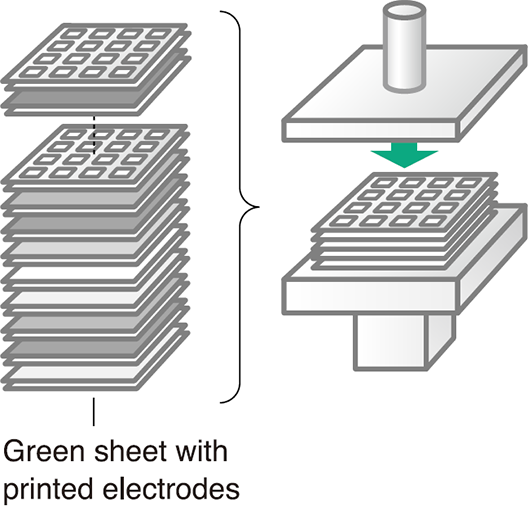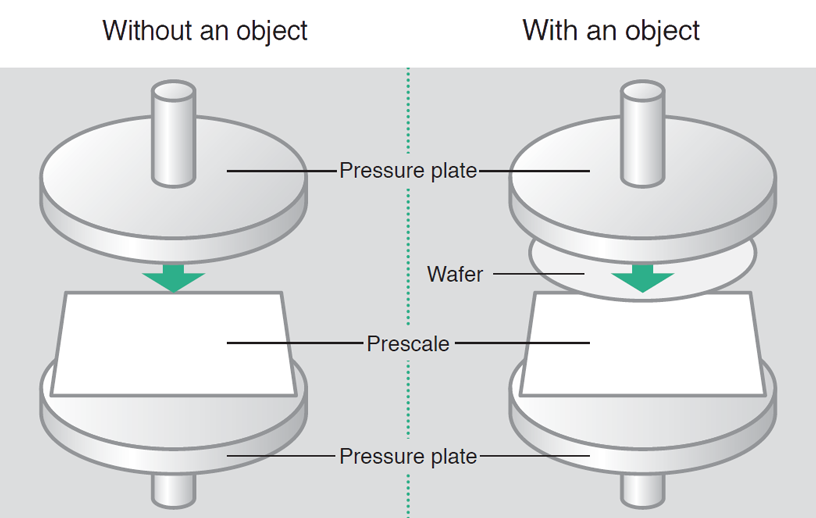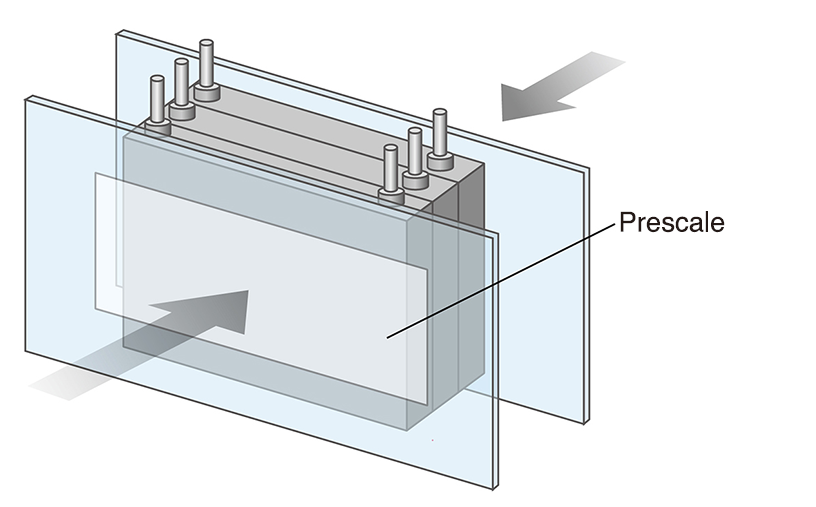Strain is a measure of how much an object's shape or volume is displaced when a force is applied to it.
This section describes the measurement principle and mechanism of strain gauges, which measure strain, in comparison with a tool used for similar applications, the pressure measurement film.
Strain gauges were created by utilizing the principle of strain.
When a certain force is applied to a metal to make it expand or contract, the electrical resistance changes accordingly.
The strain gauge measures the amount of strain by reading this electrical resistance and amplifying it to an electrical output.
Pressure measurement film is a film used to measure the load per unit area when force is applied to an object.
Fujifilm offers these films under the name of "Prescale”.
Prescale, sometimes called as “pressure indicating film”, “pressure inspecting film” or “pressure paper”, is a film that enables visualization and quantification of pressure on a surface.
Surface pressure can be easily measured simply by inserting the film between the desired areas.
Strain gauges are installed in Load Cells and other load measuring instruments.
The role of a strain gauge is to measure force by installing a strain gauge on a component called a "strain generator," which generates strain due to force, measuring the degree of strain and converting it into an electrical signal.
Load cells in which these strain gauges are used are often used together with “Prescale," a film that measures pressure.
Load Cells using strain gauges can be used to measure the load value applied to an object, while Prescale measures surface pressure
Measure the load value (point) applied to an object
Measure the surface pressure applied to an object
Strain can be obtained by the following formula.
ΔR (resistance change) ÷ R (original resistance) = K (gauge factor, proportionality constant) × ε (strain)
Here are some examples of using load cells with strain gauges.
E.g. Dry film lamination adhesion process in substrate manufacturing
Check load values at both ends of the roller
Insert Prescale between rollers and visually or quantitatively check pressure values, roller tilt, wattage, roller condition, etc. based on coloration.

Uniform pressure is applied by the rollers.
Rollers hit each other strongly in some parts or rollers are scratched.
E.g. Stacking process in substrates or multilayer ceramic devices manufacturing
Check the load value of the shaft of a lamination press.
Insert Prescale between the lamination press and the component to visually or quantitatively check for fragmentation, distribution, foreign matter, etc. on the press surface based on the coloring condition.

Pressure is evenly applied by the mold.
Mold is hitting one side, weak hit in the center
E.g. Crimping process with wafer bonding equipment in semiconductor manufacturing
Check the load value at the axis of the crimping jig
Place Prescale between the material to be crimped and the jig, and visually or quantitatively check the parallelism of the jig, pressure irregularity, load value, etc. based on the coloration.

Pressure is evenly applied.
Pressure is unevenly applied
E.g. Sealing process of outer packaging materials or activation process in lithium-ion battery manufacturing
Check load values at heat seal bar or a jig
Visually or quantitatively check the parallelism of bars and jigs, pressure distribution, load values, etc., by placing a Prescale between the sealing bar and the sealing member or between the fixing jig and the pressurizing member.


Horizontal parallelism is being achieved, and pressure is being applied evenly.
No parallelism, uneven pressure
A load cell equipped with a strain gauge can measure the force applied to that one point (one-dimensional), but it cannot see the pressure applied to a surface (two-dimensional).
If the pressure value on a surface is not controlled, it is not possible to grasp the inclination of the equipment or the overall trend, which may lead to product defects.
This is where the pressure measurement film "Prescale" comes in.
Prescale, sometimes called as “pressure indicating film”, “pressure inspecting film” or “pressure paper”, is a film that enables visualization and quantification of pressure on a surface.
Surface pressure can be easily measured simply by inserting the film between the desired areas.








